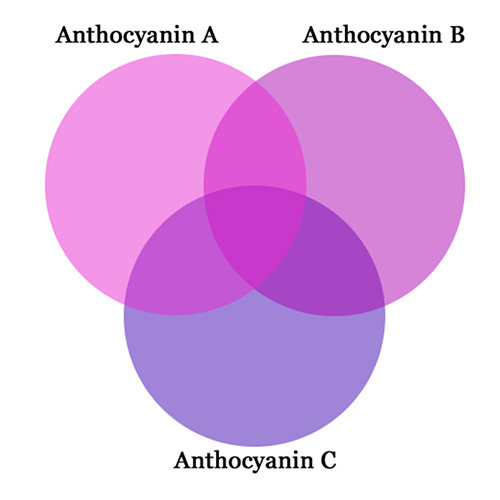I spend a lot of time talking about the coerulea color form in Phalaenopsis and doing educational seminars about the form. After spending years researching the physiology, genetics and inheritance of coerulea's, I am recommending a new description for the coerulea form and suggesting that it be broadened to cover more that just flowers that are blue/violet. All of this is very specific to Phalaenopsis; some of it may apply to other orchids, but in general assume that this only applies to orchids within the genus Phalaenopsis.
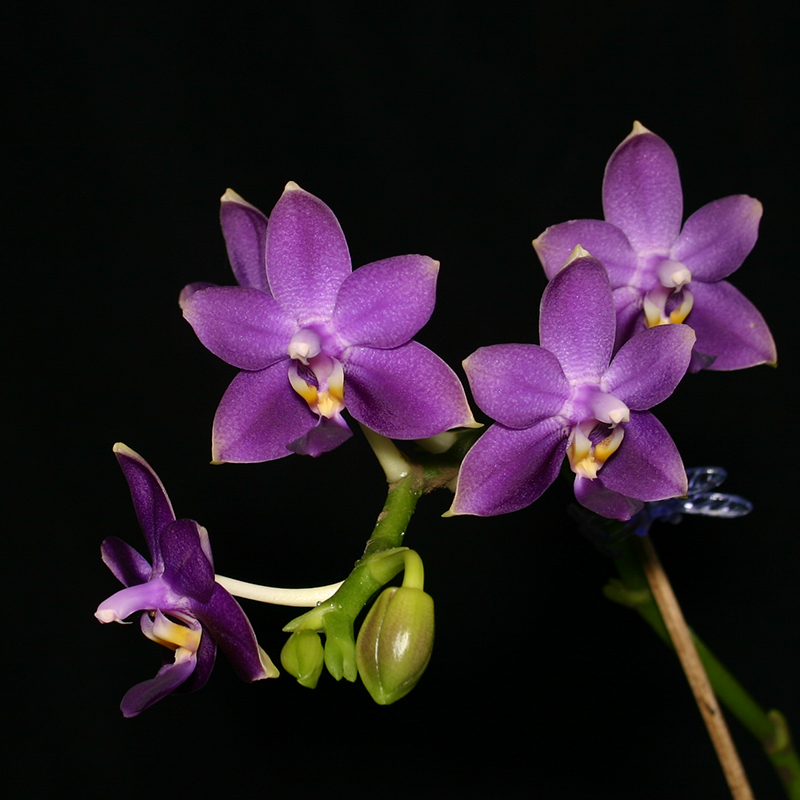
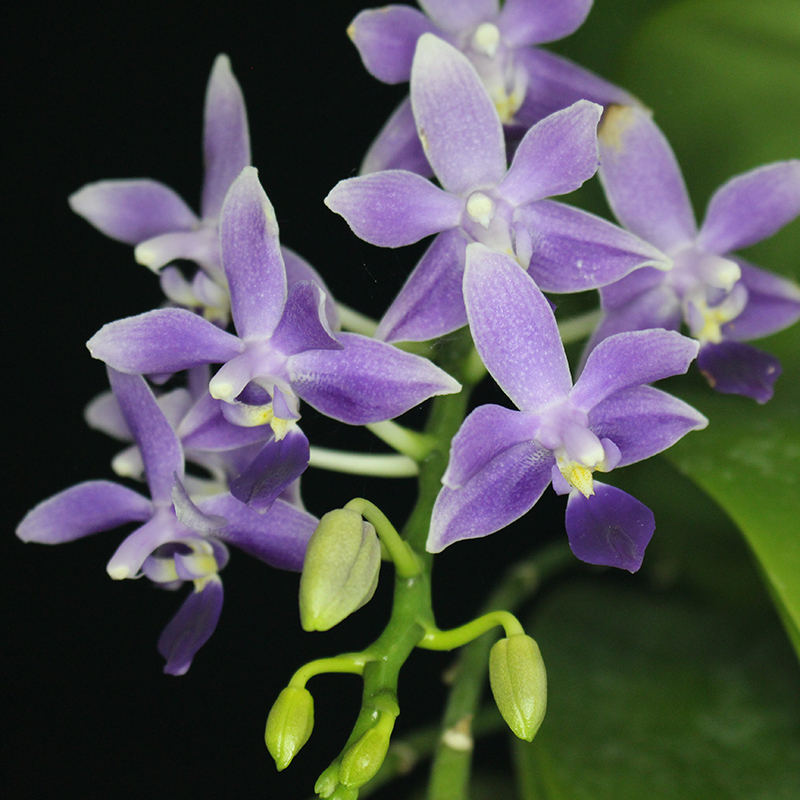
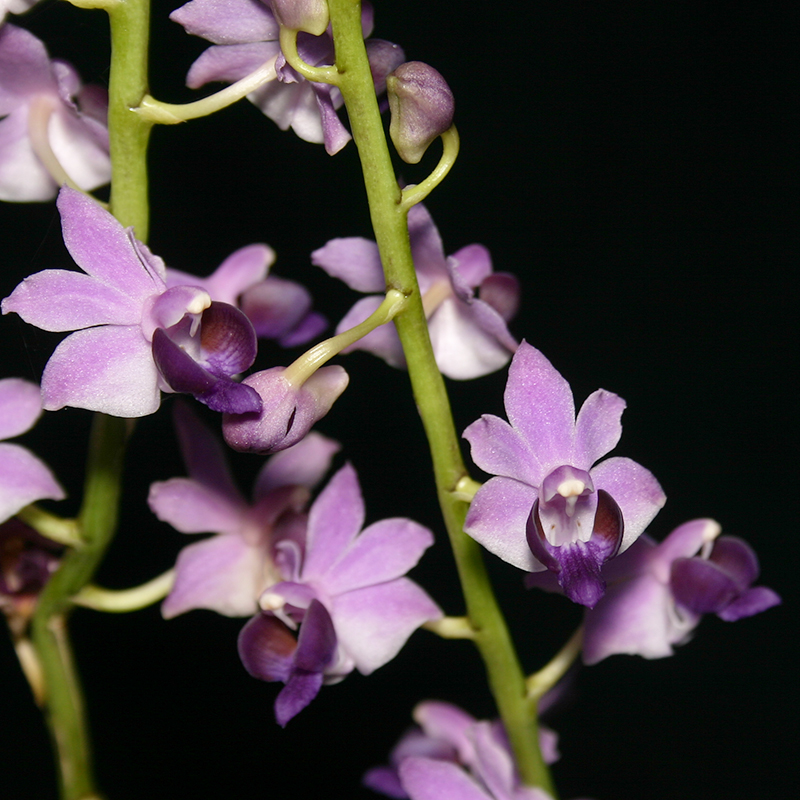
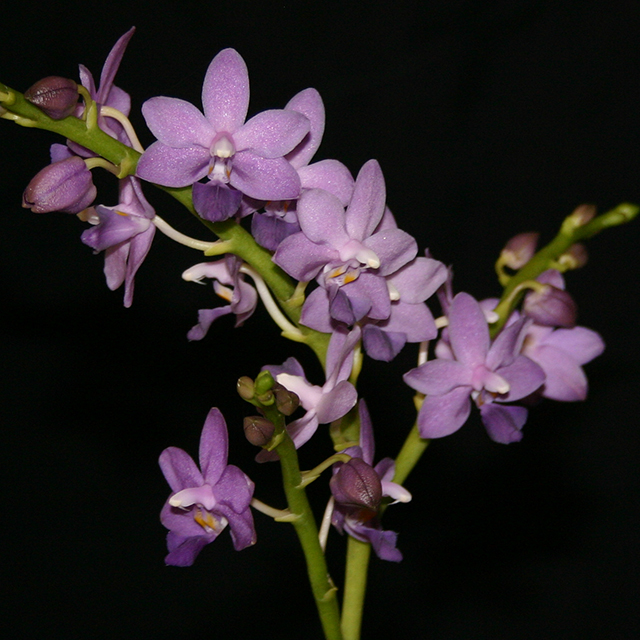
Pigments Responsible for the Coerulea Color
Pigments called Anythocyanin's in Phalaenopsis produce a range of colors from light pink, to lavender, to magenta, to purple, to violet. There are 3 different Anthocyanin's that Phalaenopsis can naturally produce. For the purposes of discussion, we will call them A, B & C. A & B are the most common and they produce the pink's to magenta color's. Anthocyanin C produces the violet color that we call coerulea.
Other pigments and co-pigments can alter the perceived color of the flower. Chlorophyll (green), Flavanoid (yellow) and Caratenoid (deep yellow, orange, brown) pigments can be present in coerulea and non-coerulea forms.
Anthocyanin Orchid Row
This is the full range of color possible just from Anthocyanin pigments in Phalaenopsis flowers. It's really amazing the range of color that you can get from just three very similiar pigments.
Technical Criteria for the "Coerulea Form"
- The coerulea color form in Phalaenopsis is the absence of the expression of the color pigments Anthocyanin A and B; as a result of one or more of the following:
- The pigment production genes for Anthocyanin A & B may be completely deleted anywhere in the pigment production pathway;
- OR Those genes may be partially or fully intact, but suppressed through a mutation/error;
- OR Those genes may be partially or fully intact, but suppressed as a result of other pigment blocking genes.
- AND includes the expression of Anthocyanin C pigments present in the flower.
- It does not matter if other pigments and co-pigments are present and to what level of saturation any of those other pigments are expressed in the flower. As long as the conditions for 1 and 2 are met, then it is a coerulea form.
This is all really important because we are getting to a more technical definition that represents the actual physiology of the form and not just a visibly perceived range of colors that has the potential to be very subjective. It's also important because this description of being a coerulea form better reflects the way these plants breed in hybridization and creates a nomenclature that is congruent with the physiology of this form.
An example being, most of the coerulea P. Jennifer Palermo and P. Germaine Vincent that we have were all made with P. tetrapsis f. bruneola and violacea var. indigo. Based on the proposed coerulea form definition, P. tetrapsis f. bruneola that has a violet lip would be considered a coerulea form and as seen in it's hybrids is breeding as if it is a violet colored coerulea.
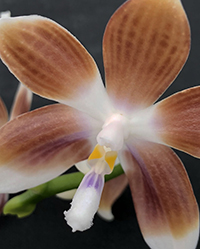
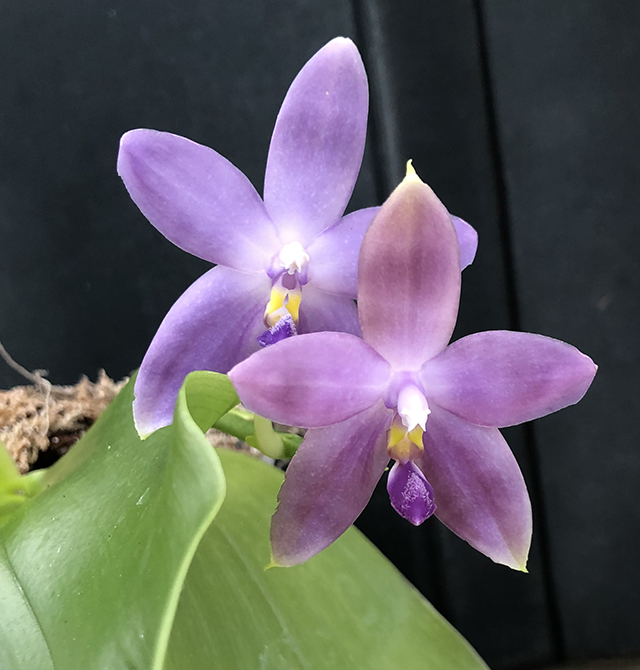
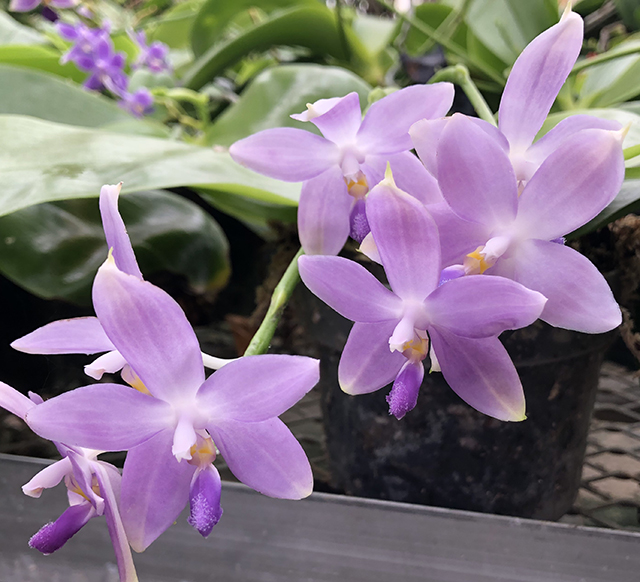
Laymen's Definition of the "Coerulea Form"
A coerulea Phalaenopsis is any cultivar where the violet color pigment is present in the flower to some degree and the pink to magenta color pigments are not present. The base color of the flower may range from white to light violet to deep indigo violet and can still have overlays of green, yellow, orange and/or brown pigments.
It's important to note, this means that the actual flower color may not be perceived to be violet all depending on the other pigments that are present. (see our blog post What "Really" is the Coerulea Form?)
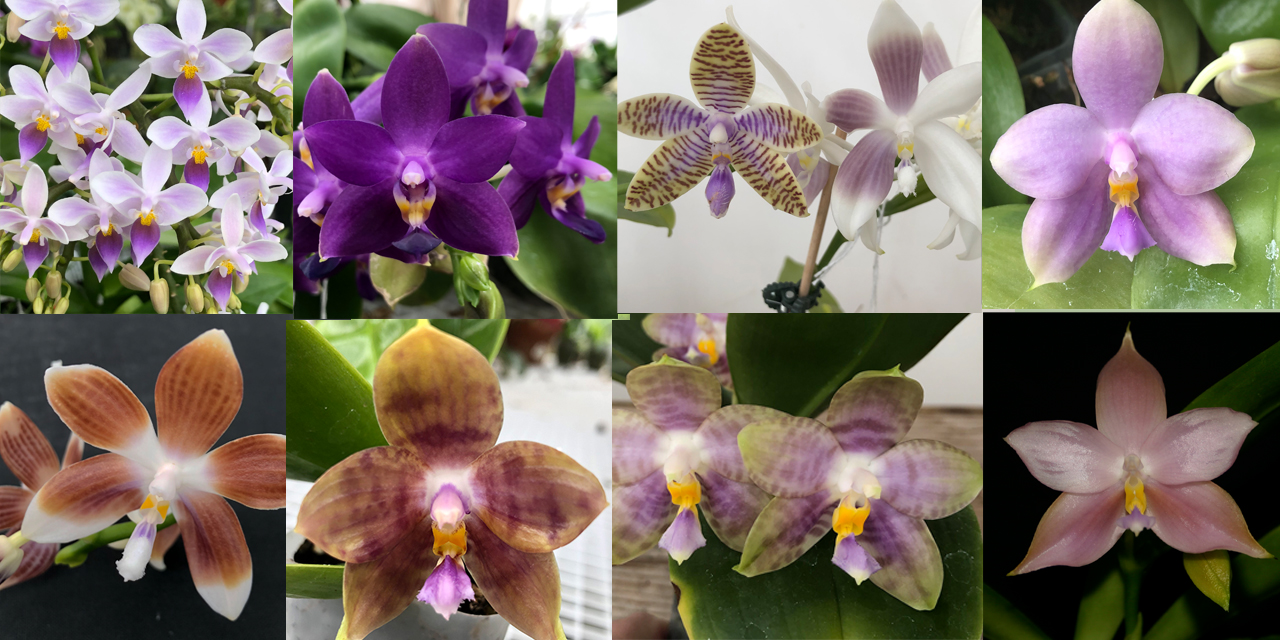
The Color Hue of the Coerulea Form
The Anthocyanin pigments in Phalaenopsis are not capable of producing true blue colors. After extensive studies using controlled Pantone color charts, we have found that all pure coeruleas are no bluer than others and the color hue should be referred to as Violet. (Not Blue, Not Purple.)
We do believe there is a precedent in horticulture to refer to the bluest flower in a plant as blue even if it is a violet/purple color. So it is only natural that coerulea phals be periodically referred to as "blue". We all know that they are not a true blue and I don't believe that anyone is trying to pull the wool over anyone's eyes. It's just become standard practice and it's a habit that is going to be nearly impossible to break. I still believe we should be referring to the color as violet, but would also ask that individuals stop flaming people for calling them blue.
"Coerulea" vs "Indigo"
As if all of this was not confusing enough, we start tossing in the term indigo. Well, what does that mean relative to this discussion. Are we talking about the color or are we talking about the origination of the color in the first place. This is probably one of the more difficult issues to address, because it could easily be both. In the case of our Jennifer Palermo above, technically it's an indigo because it's getting most of it's color from the indigo violacea; but it's actually not that dark indigo violet color. Reality is there are lots of these cases when an "indigo" line is not that dark saturated indigo color. I tend to think we should base the description off the physiology, so my tendency is to say if the coerulea form is coming from an indigo violacea line, then it's "v. indigo" and if it's coerulea form is coming from one of the standard coeruleas, then it's "v. coerulea". In this scenario "v. indigo" would still be a coerulea form much like tetraspis f bruneola is a coerulea form.
Proposed Definitions:
- Coerulea Form - A coerulea form Phalaenopsis is any cultivar where the violet color pigment is present in the flower to some degree and the pink to magenta color pigments are not present.
- color Violet - The color "Violet" is the correct color name to use when describing the pure coerulea color in Phalaenopsis.
- variety coerulea - any coerulea form cultivar based on the proposed definition of the coerulea form could be labeled "var. coerulea".
- variety indigo - any color form that includes the indigo line of coerulea violacea in it's background would be considered "var. indigo".
Hopefully all of this helps provide a better framework for thinking about the coerulea form and the colors associated with this form. I'm sure this is not going to be without debate, but I do believe this the best approach.
All the best, Rob Shepherd

